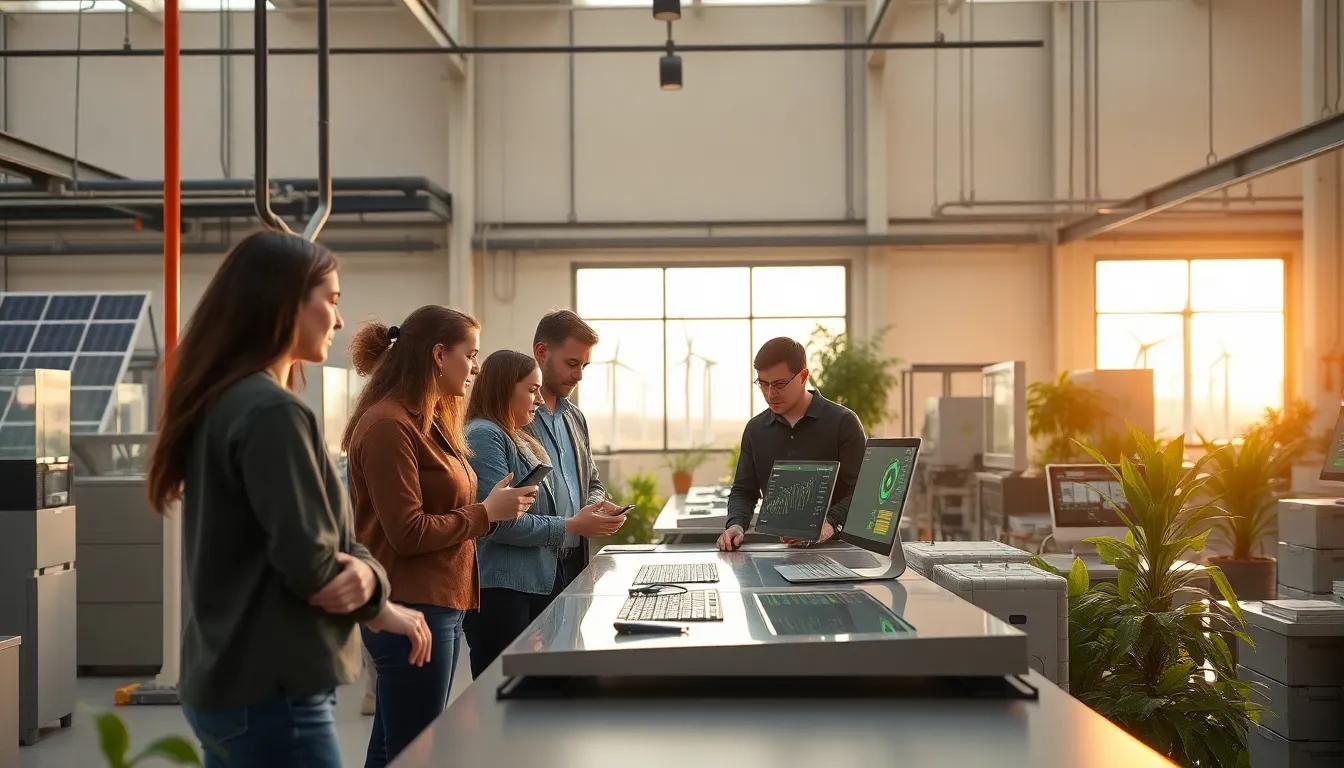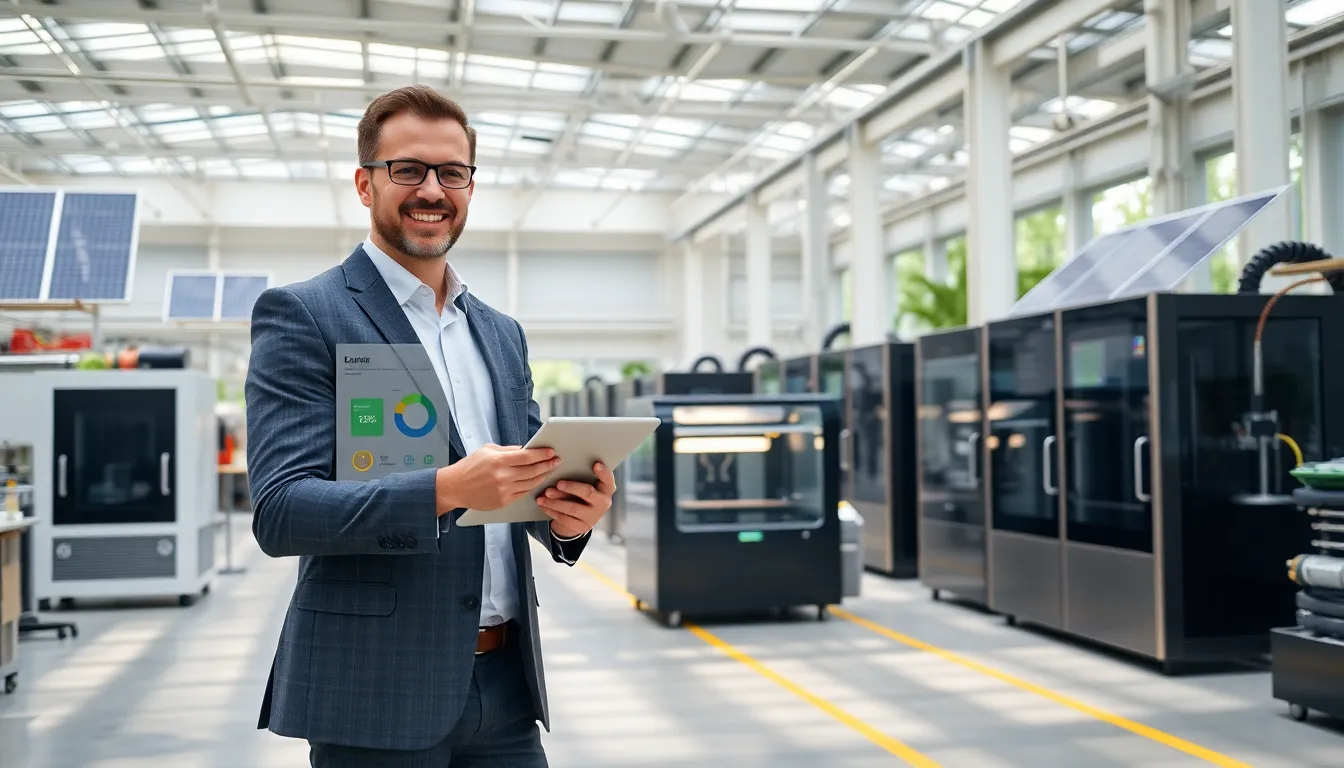Table of Contents
ToggleImagine a world where factories don’t belch smoke, and the products we love come with a side of eco-friendly goodness. That’s not just a whimsical dream: it’s where sustainable manufacturing technology steps in. This revolutionary approach not only meets modern consumer expectations but also plays a starring role in preserving our planet. Gone are the days of choosing between quality and sustainability, now, they can have both. Immerse as we explore the many facets of sustainable manufacturing and discover how it’s reshaping industries and the environment alike.
Understanding Sustainable Manufacturing

Sustainable manufacturing embraces practices aimed at minimizing environmental impacts while maximizing product quality. Imagine factories that use renewable resources, produce less waste, and operate efficiently with reduced energy consumption. This approach doesn’t just tackle waste reduction: it also prioritizes the use of sustainable materials and ethical labor practices. Essentially, sustainable manufacturing is about rethinking how products are made, transforming passion for creation into responsibility for our planet’s health. Companies are shifting their strategies to incorporate practices that create long-term value for both the business and the environment.
By implementing practices that prioritize sustainability, manufacturers can ensure products meet ethical standards while satisfying environmentally conscious consumers. This dynamic shift in focus reflects a broader cultural evolution toward sustainability, emphasizing that profitable business doesn’t have to come at the cost of environmental degradation.
Benefits of Sustainable Manufacturing Technologies
The benefits of sustainable manufacturing technologies ripple through various sectors and create a compelling case for its adoption. Firstly, there’s the cost savings aspect. By reducing waste and energy consumption, businesses find their profit margins bolstered rather than burdened. Did you know companies that focus on sustainability often enjoy better efficiency and lower operational costs? It’s true.
Beyond the balance sheet, sustainability can enhance brand reputation. Today’s consumers are savvy and prefer products from companies that demonstrate a commitment to environmental stewardship. They’re not just buying products: they’re buying into a brand’s ethos. Sustainable practices prove to customers that a company values not just profit but also the welfare of the planet.
Finally, sustainable manufacturing can foster innovation. The need for eco-friendliness pushes manufacturers to explore new technologies and methods, sparking creativity and advancement.
Key Technologies Driving Sustainability
Several technologies are at the forefront of sustainable manufacturing, reshaping production processes to be more eco-friendly. One pivotal technology is 3D printing. This method minimizes waste by producing only the necessary parts, allowing manufacturers to use resources more effectively. Not only does it save material, but it often shortens production times too.
Another game-changer is smart manufacturing, which employs IoT (Internet of Things) devices to monitor processes in real-time. With sensors and data analytics, manufacturers can optimize equipment performance, predict maintenance needs, and significantly reduce energy consumption. Picture a factory that identifies when machines are underperforming, allowing for timely interventions and preventing unnecessary energy costs.
Renewable energy integration is also transforming the landscape. By utilizing solar, wind, or other renewable energy sources, manufacturers can power their processes without contributing to greenhouse gas emissions. Companies that adopt this technology not only decrease their carbon footprint but may also enjoy substantial savings on energy costs over time.
Challenges in Implementing Sustainable Manufacturing
Even though the apparent advantages, implementing sustainable manufacturing technologies presents several challenges. One notable hurdle is the initial investment required. With cutting-edge technologies often demanding significant upfront costs, many companies may hesitate, particularly smaller businesses with tight budgets.
There’s also the learning curve. Transitioning to sustainable practices requires training employees and adjusting existing processes. Resistance to change can stall progress, as workers may be accustomed to traditional methods. Effective communication and training are crucial in navigating this transition successfully.
Then there’s the market pressure. The need for immediate returns often conflicts with the long-term vision of sustainability. Although sustainable practices yield benefits down the line, they may not offer instant profits, which can deter some manufacturers from diving in.
Future Trends in Sustainable Manufacturing Technology
Looking ahead, several trends are poised to shape the future of sustainable manufacturing. Circular manufacturing is gaining momentum. This model promotes the reuse of resources, products are designed for longevity and can be reprocessed at the end of their lifespan instead of being discarded. Picture a world where products can transition seamlessly into new items, reducing landfill waste significantly.
Automation and artificial intelligence (AI) are expected to play more prominent roles. These technologies can help predict material needs and production schedules, leading to waste reductions and more efficient operations. Imagine AI algorithms analyzing production patterns to suggest optimizations you might not have considered.
Finally, the rise of supply chain transparency is spotlighting accountability. Consumers increasingly demand to know the origin of products, prompting companies to disclose their supply chain practices. Sustainable manufacturing will thrive on transparency, allowing consumers to make informed choices based on eco-friendly practices.





